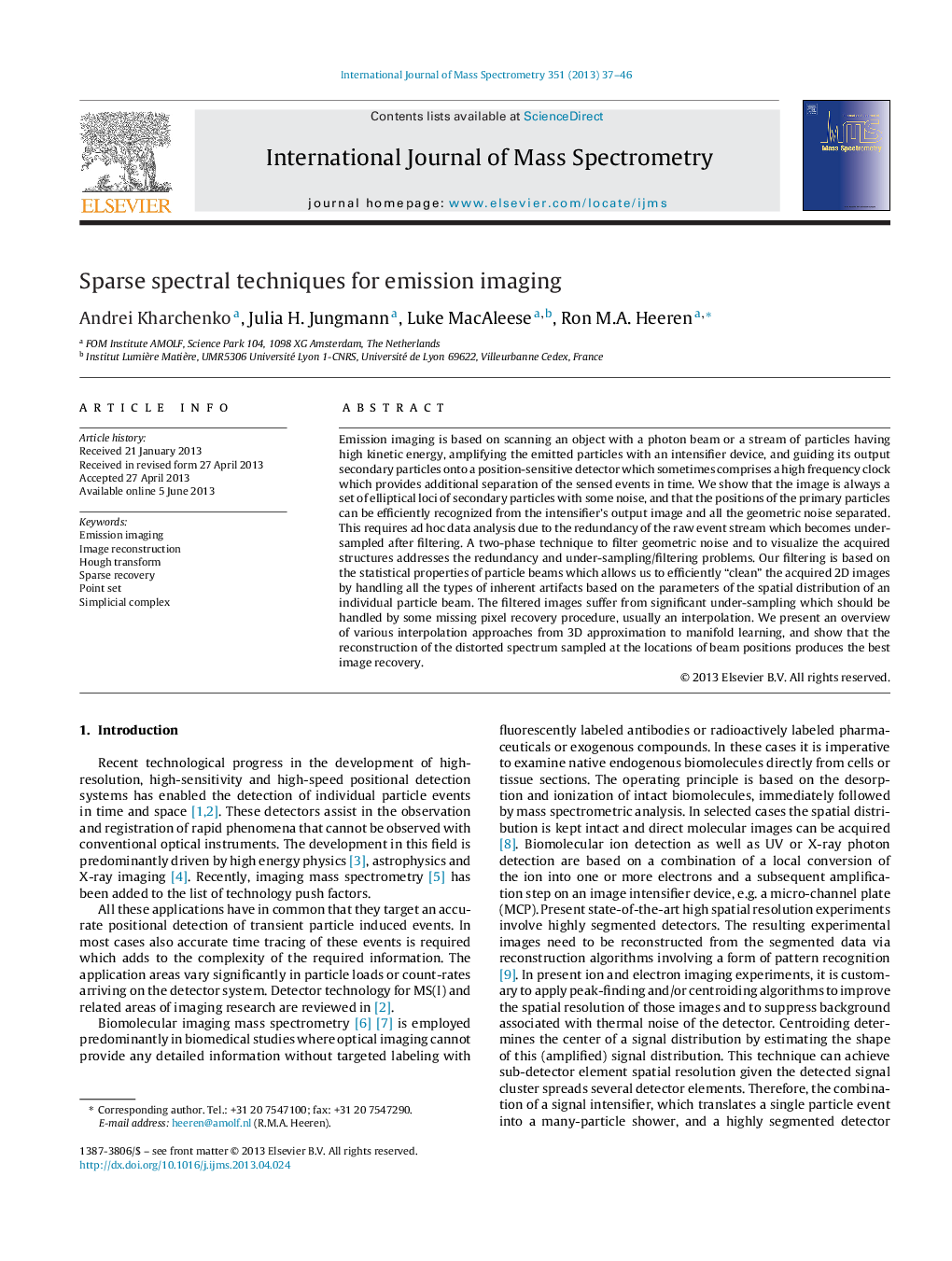| کد مقاله | کد نشریه | سال انتشار | مقاله انگلیسی | نسخه تمام متن |
|---|---|---|---|---|
| 1192573 | 1492275 | 2013 | 10 صفحه PDF | دانلود رایگان |

• Data analysis strategy for “blurred” imaging data sets acquired with image intensifiers, like microchannel plates.
• High-resolution of the original image is retrieved with a significant degree of sparseness.
• Optimum amount of information is recovered from a sparse emission data set.
• Predict the least-time consuming experimental approach by determination of minimal frame requirement.
Emission imaging is based on scanning an object with a photon beam or a stream of particles having high kinetic energy, amplifying the emitted particles with an intensifier device, and guiding its output secondary particles onto a position-sensitive detector which sometimes comprises a high frequency clock which provides additional separation of the sensed events in time. We show that the image is always a set of elliptical loci of secondary particles with some noise, and that the positions of the primary particles can be efficiently recognized from the intensifier's output image and all the geometric noise separated. This requires ad hoc data analysis due to the redundancy of the raw event stream which becomes under-sampled after filtering. A two-phase technique to filter geometric noise and to visualize the acquired structures addresses the redundancy and under-sampling/filtering problems. Our filtering is based on the statistical properties of particle beams which allows us to efficiently “clean” the acquired 2D images by handling all the types of inherent artifacts based on the parameters of the spatial distribution of an individual particle beam. The filtered images suffer from significant under-sampling which should be handled by some missing pixel recovery procedure, usually an interpolation. We present an overview of various interpolation approaches from 3D approximation to manifold learning, and show that the reconstruction of the distorted spectrum sampled at the locations of beam positions produces the best image recovery.
Figure optionsDownload high-quality image (178 K)Download as PowerPoint slide
Journal: International Journal of Mass Spectrometry - Volume 351, 1 October 2013, Pages 37–46